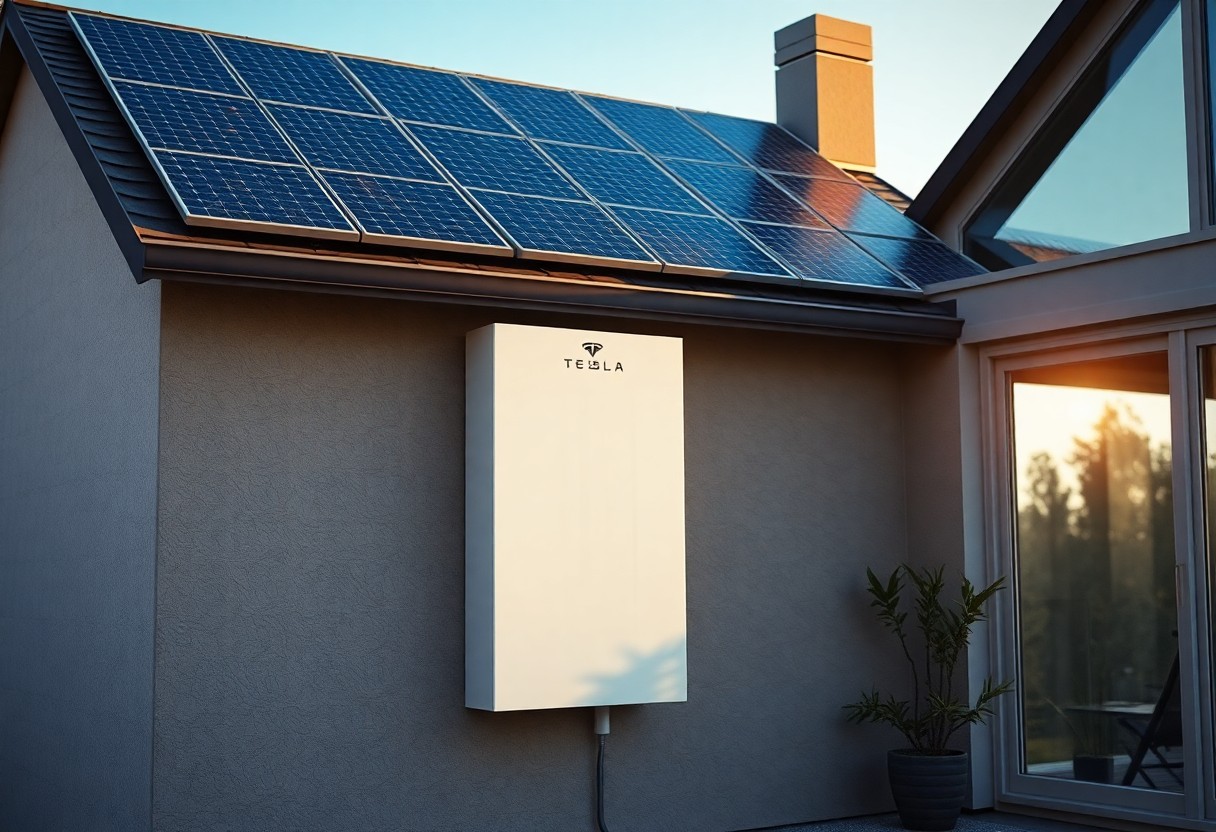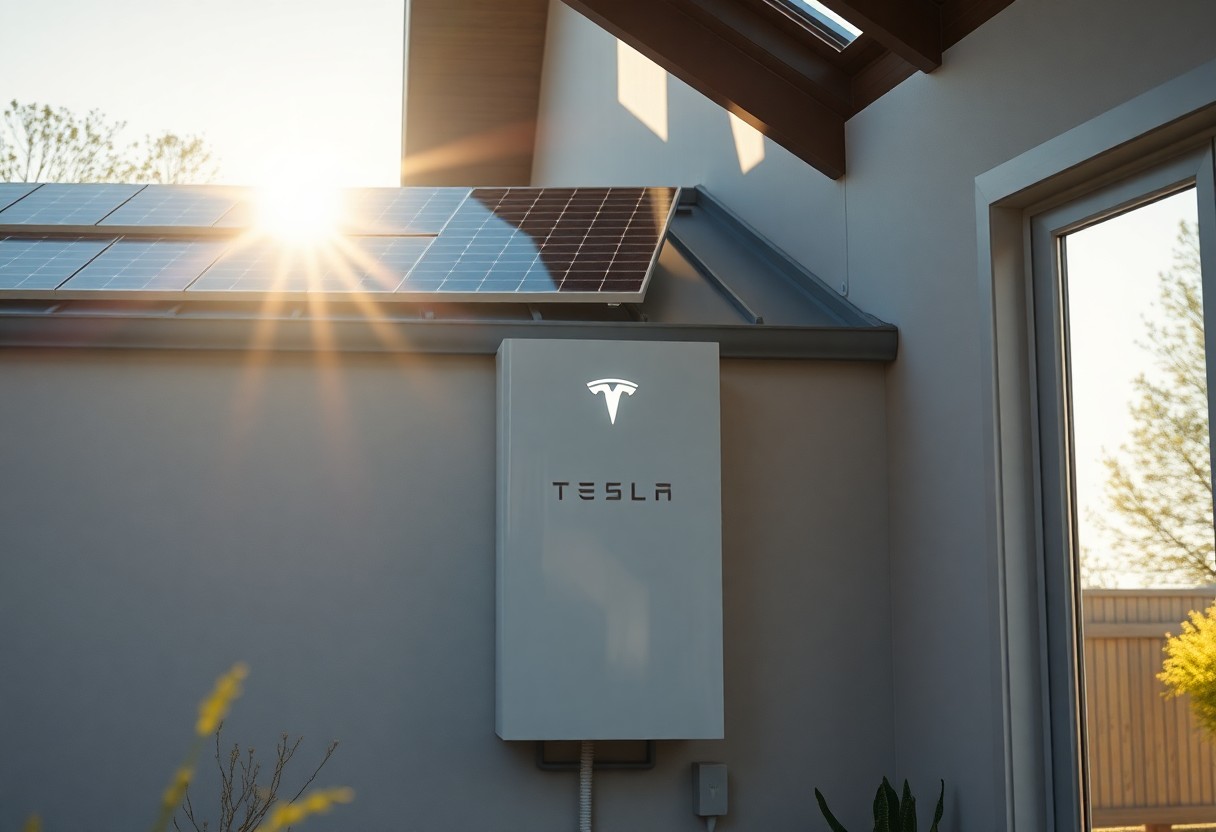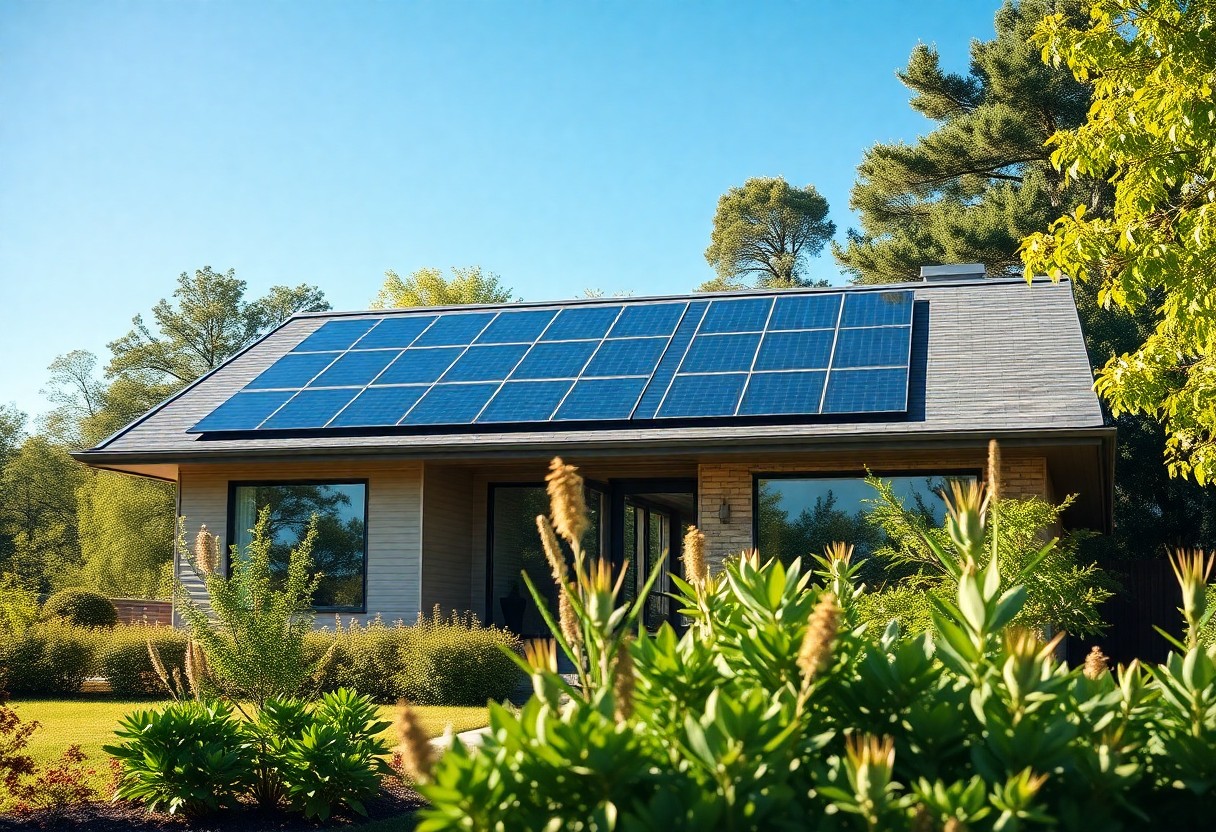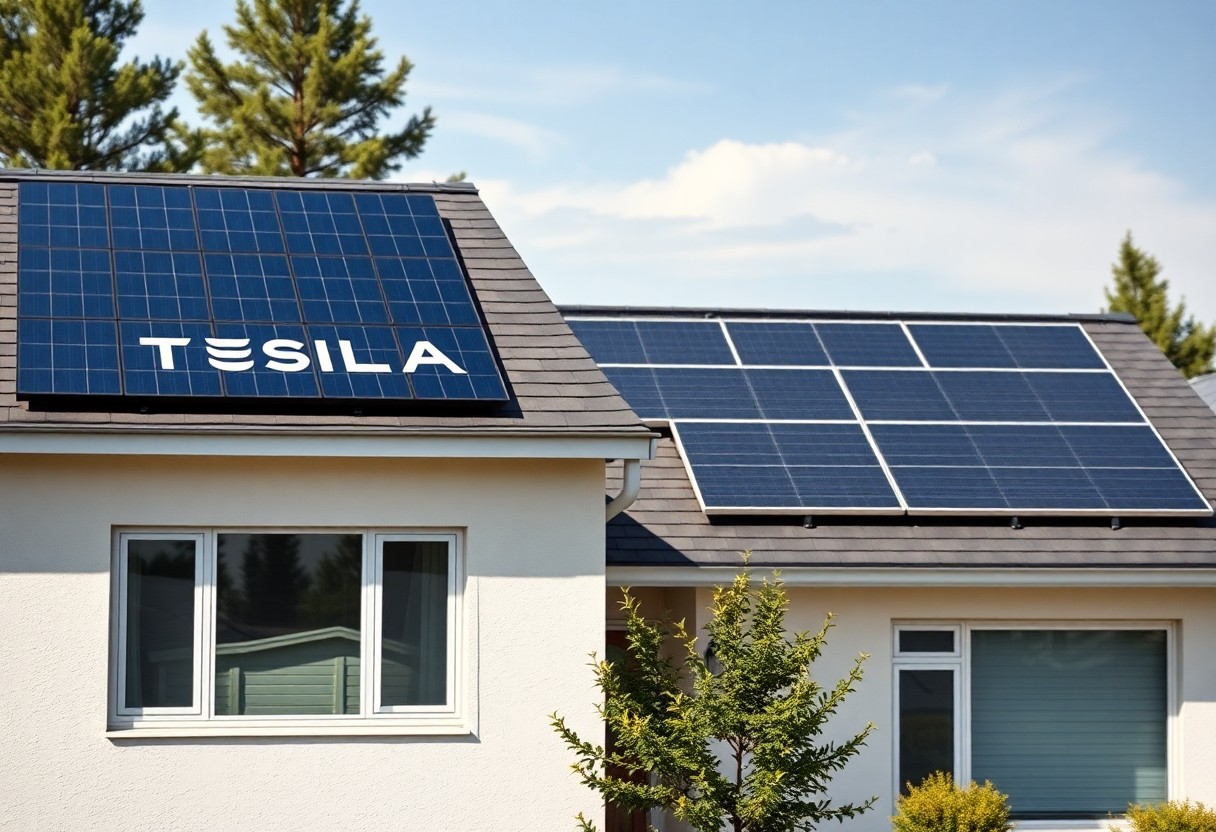There’s a revolutionary shift happening in solar energy management with the advent of the Tesla Powerwall. This innovative battery storage solution not only optimizes the energy you harness from the sun but also enhances your energy independence and resilience against outages. By integrating advanced technology and seamless connectivity, the Powerwall allows you to store excess solar energy for use during peak times, effectively reducing your electricity bills and maximizing your renewable energy usage. In this post, you’ll discover how the Tesla Powerwall can transform your home energy strategy.
Understanding Tesla Powerwall Fundamentals
A comprehensive understanding of the Tesla Powerwall is necessary for maximizing your solar energy system. This innovative device enables efficient energy storage, ensuring that the power generated by your solar panels is available when you need it most. By harnessing the sun’s energy, the Powerwall not only promotes sustainability but also enhances your energy independence, ultimately leading to savings on electricity costs.
Core Components and Technical Specifications
With its sleek design, the Tesla Powerwall consists of several core components, including a lithium-ion battery, an inverter, and an integrated thermal management system. It boasts a storage capacity of 13.5 kWh and can provide a continuous output of 5 kW, with a peak output of 7 kW. Its advanced software enables you to monitor your energy usage in real-time, optimizing performance and efficiency.
Integration with Solar Panel Systems
Components of the Tesla Powerwall seamlessly integrate with your solar panel system, ensuring you harness every bit of solar energy produced. This integration allows your Powerwall to store excess energy generated during sunny days for later use at night or during outages, providing you with reliable power. It also works in tandem with your home energy system to prioritize usage based on your needs.
It is important to note that the integration of the Tesla Powerwall with your solar panel system not only maximizes efficiency but also offers a range of benefits such as reduced electricity bills and increased energy reliability. By storing excess solar energy, you minimize reliance on the grid, especially during peak hours when electricity rates are high. Additionally, the Powerwall can provide backup power during outages, which can be vital during emergencies. This combination of features not only enhances your energy autonomy but also contributes positively to environmental sustainability.
Key Benefits of Tesla Powerwall
The Tesla Powerwall offers a range of key benefits that enhance your solar energy experience. With its advanced technology, you can store excess energy generated during the day for use at night or during power outages. This not only maximizes your solar investment but also provides a seamless transition to a sustainable energy future. By integrating with solar panels, the Powerwall actively supports energy independence, allowing you to have greater control over your energy consumption and costs.
Energy Independence and Backup Power
Tesla Powerwall empowers you to achieve true energy independence, acting as a reliable backup during outages. With its built-in battery, you can store energy from your solar system, ensuring you have sufficient power even when the grid fails. This independence not only protects you from fluctuating electricity prices but also enhances the resilience of your home. As a result, you can enjoy peace of mind knowing your energy supply is stable and renewable.
Cost Savings and Return on Investment
Now, investing in a Tesla Powerwall can lead to significant cost savings for your household. By utilizing stored energy during peak hours, you can reduce your reliance on utility power and lower your electricity bills. Additionally, the Powerwall’s ability to support your solar system can lead to a strong return on investment over time, making it a wise financial decision.
The Tesla Powerwall not only reduces your energy costs but also enhances your home’s overall value. By taking advantage of stored solar energy during high-rate periods, you maximize savings on your electricity bills. Furthermore, many regions offer incentives and rebates for solar installations, which can provide additional financial benefits. The combination of these aspects means that over the lifespan of the Powerwall, you can expect a robust return on investment while enjoying the environmental advantages of clean energy. With the rising cost of electricity, the Powerwall stands out as a proactive solution for budget-conscious homeowners.
Installation Process and Requirements
Some key components are involved in the installation process of the Tesla Powerwall. You will need proper electrical capacity, sufficient space for the battery units, and a clear understanding of local building codes. It’s important to engage certified professionals to ensure the installation adheres to safety and efficiency standards.
Site Assessment and Planning
One of the first steps is conducting a thorough site assessment to evaluate your home’s energy needs and how the Powerwall will fit into your existing solar system. This includes analyzing roof space, electrical systems, and specifications about sunlight exposure. The professionals will help you develop a solid plan, ensuring optimal performance.
Professional Installation Steps
Some crucial steps are involved in professionally installing the Tesla Powerwall. After the site assessment, qualified technicians will handle the installation, which includes safely connecting the battery to your solar panels and electrical system. They will also ensure any needed upgrades are performed and that the system is properly configured for optimal use.
To ensure a seamless installation, the professionals will first turn off your electrical system to maintain safety. They will then install mounting brackets for the Powerwall, securely bolt the battery to the wall, and connect it to your solar inverter. Once everything is in place, they will test the system to confirm it operates correctly and efficiently while adhering to all local regulations, ensuring not just functionality but also safety. You can rest assured knowing the experts will handle all the technicalities while you benefit from your new energy storage solution.

Optimizing Powerwall Performance
Despite its efficient design, maximizing the performance of your Tesla Powerwall requires attention to various factors. By managing your solar input, household energy consumption, and battery health, you can enhance the Powerwall’s ability to store and distribute energy effectively. Additionally, utilizing smartphone monitoring tools and settings can help you stay informed about your system’s performance, allowing you to make necessary adjustments for optimized energy use.
Best Practices for Daily Usage
There’s a range of strategies you can implement to get the most out of your Powerwall. Regularly check your usage patterns and adjust your settings to match peak energy times, allowing you to store energy when it’s most abundant and save on costs.
Maintenance Tips and Guidelines
Tips for maintaining your Tesla Powerwall focus on simple practices that ensure longevity. Regularly inspect your unit, monitor performance, and keep your installation area clean. Here are some best practices:
- Keep the Powerwall away from debris.
- Check for any indications of wear or malfunction.
- Utilize software updates when available.
This will help maintain your battery’s efficiency and prolong its life.
To further enhance your Powerwall maintenance routine, consider adjusting the settings based on seasonal changes in energy consumption. Regular performance checks after major weather events and ensuring your connections are secure can also contribute significantly to its reliability. Here are some additional tips:
- Schedule periodic professional inspections.
- Document any performance issues as they arise.
- Upgrade to the latest software version.
This way, you will safeguard the performance and integrity of your energy storage system.
Factors Affecting Powerwall Efficiency
Not all installations yield the same level of performance; several factors can impact your Powerwall’s efficiency. Key considerations include:
- Battery Capacity – the size of your Powerwall matters.
- Solar Panel Output – the efficiency of your solar energy collection.
- Load Demand – how much energy your household consumes.
- Temperature – extreme conditions can affect battery performance.
Recognizing these factors can help you optimize the performance of your Powerwall.
Environmental Considerations
One significant aspect of the Powerwall’s efficiency is its interaction with your local environment. Factors such as climate, sunlight availability, and temperature fluctuations can greatly affect the overall performance of your solar system. Optimal conditions can enhance energy production, allowing you to maximize your return on investment and reduce reliance on the grid.
Energy Consumption Patterns
There’s a direct relationship between your energy consumption patterns and the effectiveness of your Powerwall storage. Analyzing when and how you use electricity can lead to better energy management strategies that result in reduced utility bills and increased energy efficiency.
Another important aspect to consider is your household’s daily energy use. Regular peak loads during specific hours can affect how efficiently your Powerwall stores energy. If you tend to use more power during the day while solar production is high, you can leverage that to charge your Powerwall effectively. Additionally, aligning your Powerwall charging with periods of high solar output while minimizing usage during these times can lead to significant savings. Adopting such energy practices ensures you maximize the benefits of solar power.
Powerwall vs. Traditional Storage Solutions
Your energy storage options have expanded significantly with the introduction of the Tesla Powerwall. Unlike traditional storage solutions, which often require complex setups and maintenance, the Powerwall offers a streamlined, user-friendly experience. Its integrated design allows for seamless solar energy conversion and storage, ensuring that you can efficiently harness and utilize energy. With advanced features like smart technology, remote monitoring, and easy installation, the Powerwall stands out as a modern alternative that gives you greater control over your energy consumption.
Comparative Analysis of Storage Technologies
Storage technologies vary significantly in their designs and functionalities. Below is a comparative analysis of popular storage solutions.
| Feature | Traditional Solutions |
|---|---|
| Efficiency | Lower |
| Installation Complexity | High |
| Maintenance | Regular upkeep needed |
| Smart Technology | Limited integration |
| Cost | Potentially higher long-term |
Long-term Performance Metrics
Comparative assessments over time reveal that the Tesla Powerwall significantly outperforms traditional storage methods in critical areas such as efficiency and reliability.
Metrics related to long-term performance show that the Powerwall retains its storage capacity better than many conventional systems, which can degrade over time. Concerns regarding battery lifespan and performance efficiency can affect traditional systems more severely, often leading to higher replacement costs. In contrast, the Powerwall is designed to withstand numerous charge cycles while minimizing energy loss. This means you can enjoy a sustainable and consistently enhanced energy experience, optimizing your investment over the long haul.
Summing up
Ultimately, the Tesla Powerwall transforms solar battery storage by allowing you to efficiently harness and utilize the energy generated from your solar panels. Its advanced technology enables seamless integration with your home energy system, maximizing the benefits of solar power while providing backup energy during outages. By storing excess energy for use when the sun isn’t shining, you significantly enhance your energy independence and reduce reliance on the grid, thereby optimizing your overall energy management strategy.


